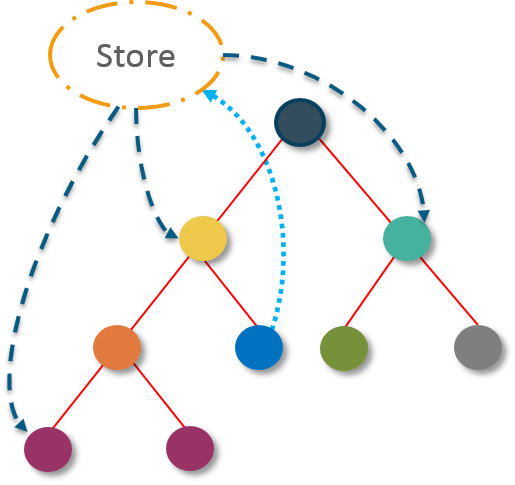

An # annotation that provides a little spoiler for our new bindings generator, which we will discuss below.Unfortunately, our state is pretty large at this point, so that was not an option for us.
#Redux reducer full#
If your state is small, you probably can get away with simply returning the full new state. This state_update is effectively a diff between the old state and the new state, so that we only need to serialize parts of the new state that have actually changed.
#Redux reducer code#
On the first line of code we see the state instance that lives in Rust.There’s a couple of things going on here: This resulted in reducers with signatures such as this one: Write Reducers in Rustįirst, we ported our reducers to Rust.

We could not escape this problem entirely (we still needed to have state in TypeScript, so that React could render it), but we minimized its impact by moving our state into Rust. Every time you want to invoke your logic, you pay the price of serializing the relevant state back and forth. When your core logic is written in Rust, while your state is managed in TypeScript, you have an impedance mismatch.

This eventually made us rethink how we did our state management. This is a complex procedure that involves several round-trips in and out of WASM. This was especially problematic when a client had to perform conflict resolution. Exposing pure functions was great for testability but some operations were large and passing them back and forth across the WASM bridge repeatedly became a bottleneck for us. Serialization overhead also became an issue.Again, things worked, but the solution was becoming increasingly brittle. This led us to use ts-rs for generating our TypeScript types, with manually written glue code where we had to pass objects with types generated from ts-rs into functions generated by wasm-bindgen. Worse, type-safe enums were not supported at all. This didn’t match our usage of plain-old objects that we wished to store in our Redux state.

Rust structs were exposed as classes to TypeScript.While wasm-bindgen allows for passing complex data structures back and forth through JSON serialization, we ran into some practical limitations: All the code that dealt with Redux directly was still being written in TypeScript.Įverything worked but some pain points quickly emerged. The functions that implemented our business logic were pure functions that we invoked from our Redux thunks and reducers as appropriate. The way we initially integrated our Rust code was relatively straightforward: We simply used wasm-bindgen, the go-to tool for integrating Rust WASM code in the browser. Initial solution: Wasm-bindgen to the rescue
#Redux reducer generator#
This post will explore how we integrated this WASM code into a React/Redux application, as well as why we ended up writing our own bindings generator for it. As part of the challenges we faced implementing such an editor, we had several complex functions written in Rust that we had to use on the frontend through WebAssembly. Index.At Fiberplane, we are building a collaborative notebook editor for incident response and infrastructure debugging. In other words, middleware is an enhancement to store.dispatch() You can use Redux middleware for logging, creating crash reports, calling asynchronous interfaces or routing, and more. In order to allow all container components to access the store, we need to use the Provider component provided by react-redux to wrap the APP component.Of course, if you want to use it with react-router, you need to wrap BrowserRouter or others. What can really change the data in the store is the store.dispatch API. The core concept of Redux is actually very simple: Store all the state that needs to be modified in the store, initiate an action to describe what happened, and use reducers to describe how the action changes the state tree.When creating a store, you need to pass in the reducer. Today we will use react-redux in the project: As a separate library, redux can be used with Angular, vue, react and jQuery.


 0 kommentar(er)
0 kommentar(er)
